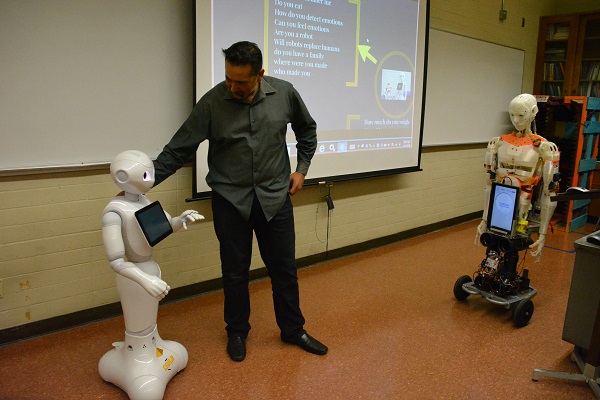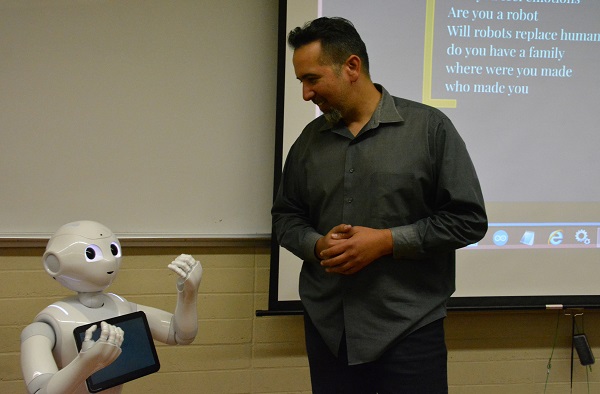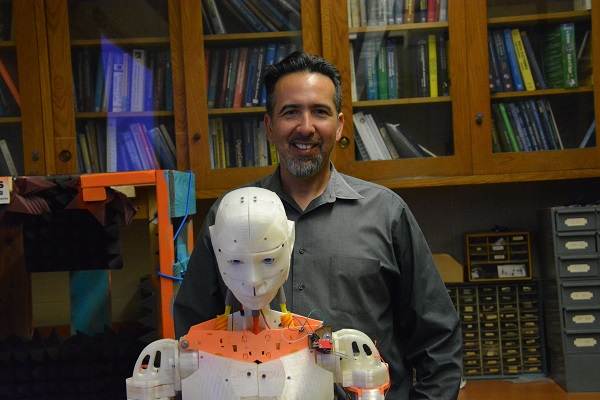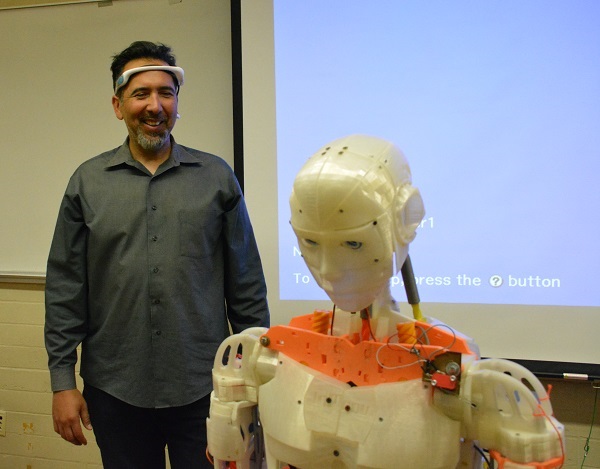Over Coffee® is on Thanksgiving hiatus. We’ll be back next week with our 200th episode! Meanwhile, here is one of our most popular podcast episodes of 2018.

Podcast: Play in new window | Download
Subscribe: RSS
You look at a robot. You’re imagining it moving towards you.
After a moment, the robot responds by moving in the direction you’ve envisioned.
Or, you come into the lab after a rough day. A second robot “notices” you’re not happy–and comments on that fact!
Those are just two entirely possible scenarios which roboticist Walter Martinez is currently researching.

Walter, who teaches electrical engineering at CSULB, is the past President of nonprofit Robotics Society of Southern California. Currently, he serves as secretary at RSSC. And earlier this year, he obtained a grant to purchase a “Pepper” humanoid social robot for the campus.
“Pepper”, as mentioned in our earlier post, can carry on a basic conversation and answer questions. She also responds to facial expressions.

And the InMoov robot which Walter was building during our first visit, in 2017, is now complete. The robot, christened “Evo”, is the world’s first fully-printed, life-sized robot.

It’s also one which Walter has programmed to move forwards and backwards, in response to his brain waves!
And if you’re thinking, “Ohh, I’d love to see these,” guess what. You can!
The Robotics Society of Southern California meets on the second Saturday of every month, at Cal State Long Beach. Their free monthly meetings feature guest speakers and everyone’s welcome. And you don’t need robotics experience to attend! (However, if you’d like to start making your own robots, that’s a possibility too. All the projects on their website are open source–and there will be plenty of interested fellow robot enthusiasts who’d like to see what you come up with.)
Walter talked about his work with the “Pepper” and “Evo” robots, and what his research with them had been like, during our April, 2018 visit.
On this edition of Over Coffee®, you’ll hear:
-
How “Pepper” works, as a social robot;
-
How our brain waves can cause “Evo” to move;
-
What needs to happen to make Evo move, with brain signals;
-
Some of the obstacles to focusing to move Evo, and how Walter deals with them;
-
The process a scientist or an arts person can use to focus on moving Evo;
-
Some of the implications of brain-wave research in other areas, such as stroke rehabilitation and the use of brain waves;
-
Walter’s favorite experiences with Pepper and Evo;
-
Some projected future uses of brain-wave research findings;
-
Some of the implications and findings of recent brain-wave research;
-
AND, an invitation!
